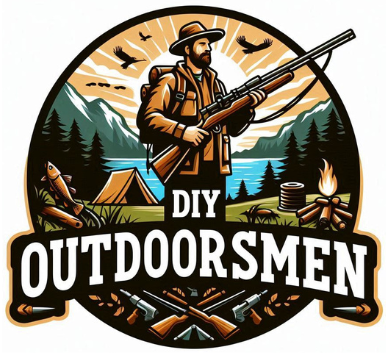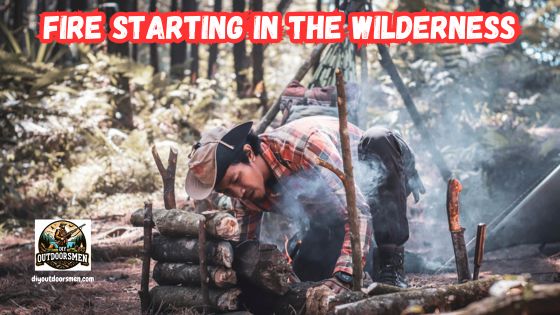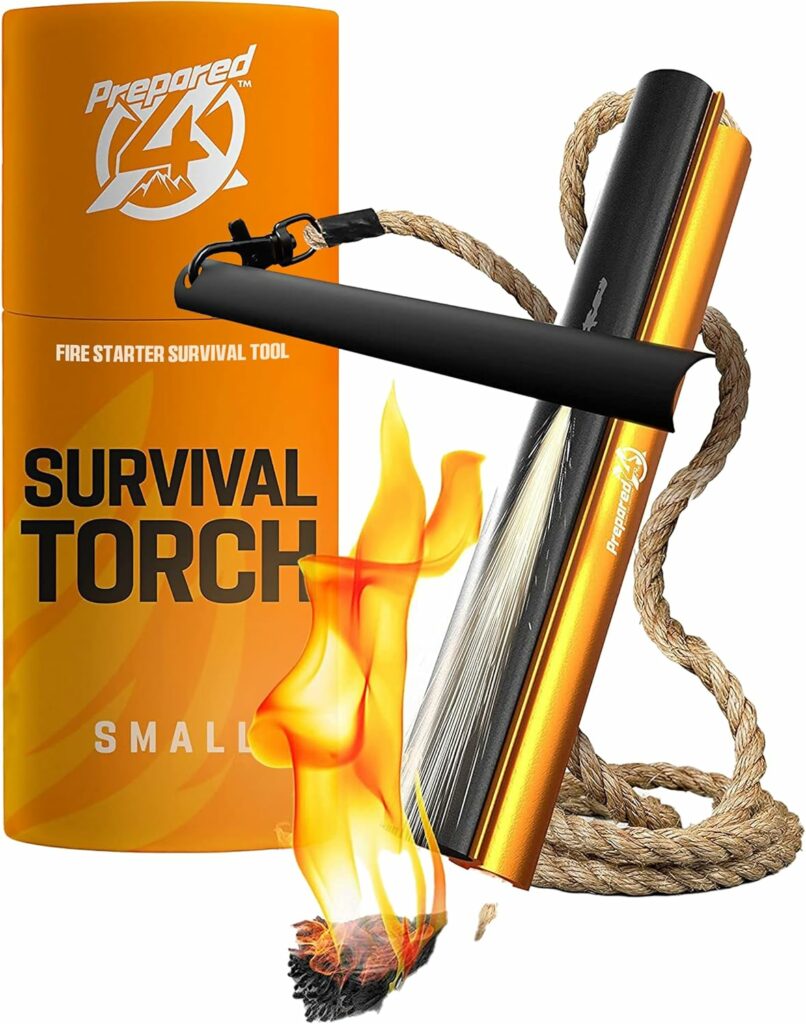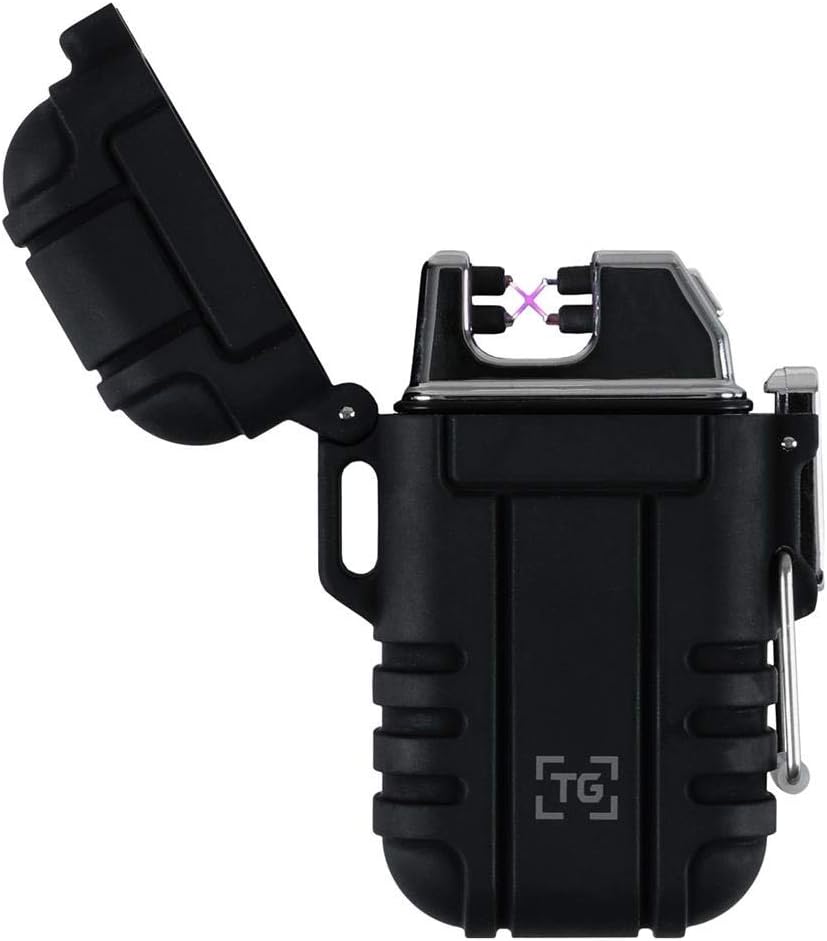Contents
- 1 Primitive Fire Starting Methods
- 2 Modern Fire Starting Tools
- 3 Essential Materials and Preparation
- 4 Practical Guide to Fire Starting
- 5 Common Challenges and Solutions
- 6 Frequently Asked Questions on Fire Starting in the Wilderness
- 7 Advanced Tips for Mastering Fire Starting Techniques
- 8 The Basics: Equipment and Materials For Beginners
- 9 Practical Advice and Personal Experiences
- 10 Final Considerations for Safety and Success in Fire Starting
I have long found the challenge of fire starting in the wilderness both exciting and educational. There is a rich history behind traditional methods and modern solutions. In this article, I explain several techniques that I have learned over time, along with practical tips to boost your confidence when lighting a fire in nature.
Fire is a critical tool in the outdoors. Not only does it provide warmth and a way to cook food, but it also plays a very important role in safety and survival. I have spent countless hours testing various approaches.
QUICK LOOK: Guide to Starting a Fire in the Wilderness
- Start by selecting a safe location. Pick a spot that is distant from tall grasses, low-hanging branches, and other hazards. If the area is rocky, clear away any flammable debris to prepare a safe site.
- Gather your materials in advance. I put together a dedicated kit that contains tinder, kindling, small fuel wood, and the preferred fire-starting tool of the day—be it a ferro rod, a flint and steel kit, or even a board for the bow drill.
- Prepare a fire pit or ring by using an existing cleared area or by constructing a simple ring of stones in a cleared spot. I take extra care to ensure that the fire cannot spread beyond the designated boundaries.
- When using friction techniques like the bow drill or hand drill, the selection of wood is paramount. I prefer dry, soft wood for the board and a harder, denser wood for the spindle. The correct alignment, combined with proper pressure, is critical and comes with regular practice.
- Once a spark or ember appears, it is crucial to handle it gently. Carefully transfer the smoldering tinder into a prepared nest of kindling, and softly blow on it to encourage the ember without quelling it. Gradually, the ember develops into a stable flame that is then fed by larger pieces of fuel.
Whether using age-old friction techniques or modern ignition tools, the focus always remains on simplicity and practicality. Every method requires a clear understanding of the materials needed and how to use them safely in the wilderness.
This guide is intended for anyone interested in wilderness survival or outdoor recreation. I cover both traditional practices and new devices that smooth the way for a reliable fire-start. Readers will find details that help both the beginner looking to master a time-tested skill and the experienced enthusiast preparing for unpredictable conditions.
Primitive Fire Starting Methods
Primitive fire-starting methods have been passed down for generations. My first taste of traditional fire making came when I was exploring forested areas as a youth. I discovered early on that the basics of friction are absolutely essential. Techniques like the bow drill, hand drill, fire plow, and fire piston use almost nothing more than wood and persistence.
The bow drill, for instance, relies on a bow to rapidly rotate a spindle against a fireboard. This action creates friction and heat, eventually producing a small ember. The process demands patience, the right type of wood, and plenty of practice. I have learned that using softwoods such as cedar or cottonwood for the fireboard and a hard, dry spindle produces the best results.
The hand drill is a similar method but without the assistance of a bow. Instead, the spindle is rotated by hand. Although this approach requires more manual effort, it offers a very direct connection with the primitive process. Even if it can take longer to generate an ember, the satisfaction of success makes the extra work very rewarding.
The fire plow is another classic method. In this technique, you scrape a piece of wood against a grooved board. The motion creates friction and heat along the groove, eventually igniting tinder. While the method is straightforward, it demands precise pressure and the correct choice of wood to be effective.
An especially intriguing method is the fire piston. I was fascinated by how rapidly compressing air in a small cylinder can heat tinder to the ignition point. These devices are compact and portable and a good example of making use of physics. The fire piston provides an excellent alternative when friction methods seem too challenging.
Modern Fire Starting Tools
Advancements in technology have introduced a range of modern tools that make fire starting quick and reliable. I now often rely on these devices during wilderness trips when conditions require a fast and effective ignition.
- Flint and steel remains a favorite among many outdoor enthusiasts, including myself. This method involves striking a piece of carbon steel against flint to produce sparks that ignite tinder. The success of the method hinges on having the correct type of flint and quality steel. I carry a small, robust flint kit on nearly every trip for emergencies.
- Ferrocerium rods—often known simply as ferro rods or fire steel rods—are another modern tool. When scraped with a metal striker, these rods emit bright, hot sparks capable of igniting even damp tinder. The consistent shower of sparks produced by ferro rods increases the likelihood of effective ignition, even in adverse weather conditions.
- Lighters are also an indispensable tool. A reliable, well-built outdoor lighter provides a quick and consistent flame. Although I always carry backup methods in case the lighter fails, its convenience is unmatched in a pinch.
- Another creative modern method involves using a magnifying lens to focus sunlight onto dry tinder. I have experimented with lenses from sunglasses or compact magnifiers. Although the success of this method depends on clear weather and strong sunlight, it is a practical solution when traditional fire-making tools are not available.
- A further inventive technique uses a 9V battery combined with steel wool. When the fine strands of steel wool connect with the battery’s current, a spark is generated. This technical yet simple approach has proven quite useful in emergency situations when nothing else seems to work.
Essential Materials and Preparation
Proper preparation is critical to successful fire starting. I never begin without first gathering the right materials. The foundation of any fire is the fire triangle: heat, fuel, and oxygen must all be present. This concept guides every fire I start in the wild.
- The very first material to consider is tinder. I keep a variety of tinder on hand, including dry leaves, small twigs, and char cloth. These materials catch a spark or a small ember and help build the initial flame.
- Next comes kindling—small, dry pieces of wood that help the flame grow steadily. I store kindling in a dry container to ensure that moisture does not interfere with the ignition process.
- Fuel, comprised of larger pieces of wood, sustains the flame once it has been established. I never rush the process of building a fire, but I always make sure that ample fuel is available. Organizing these components before beginning makes for a safer and more controlled burn.
- It is also very important to understand weather conditions and the environment. I always choose locations that reduce risk; areas away from dry brush and overhanging branches are ideal. This careful consideration minimizes the chance of the fire getting out of hand.
Keen observation of the properties of the local wood and tinder also helps me decide the best method to use. Being well prepared and patient ensures that I can manage the fire starting process with confidence and control.
Practical Guide to Fire Starting
When kicking things off on a wilderness trip, I always carry a set of fire-starting tools and materials. Planning ahead truly makes a difference, especially in challenging conditions. Here is a straightforward guide based on my own experience.
- Start by selecting a safe location. Pick a spot that is distant from tall grasses, low-hanging branches, and other hazards. If the area is rocky, clear away any flammable debris to prepare a safe site. A thorough inspection of the surroundings is always necessary before beginning.
- Gather your materials in advance. I put together a dedicated kit that contains tinder, kindling, small fuel wood, and the preferred fire-starting tool of the day—be it a ferro rod, a flint and steel kit, or even a board for the bow drill. Organizing these items ahead of time vastly increases the chances of success.
- Prepare a fire pit or ring by using an existing cleared area or by constructing a simple ring of stones in a cleared spot. I take extra care to ensure that the fire cannot spread beyond the designated boundaries. A controlled start is always the objective.
- When using friction techniques like the bow drill or hand drill, the selection of wood is paramount. I prefer dry, soft wood for the board and a harder, denser wood for the spindle. The correct alignment, combined with proper pressure, is critical and comes with regular practice.
- Once a spark or ember appears, it is crucial to handle it gently. Carefully transfer the smoldering tinder into a prepared nest of kindling, and softly blow on it to encourage the ember without quelling it. Gradually, the ember develops into a stable flame that is then fed by larger pieces of fuel.
This step-by-step process is methodical rather than rushed. In my experience, building a fire slowly and carefully leads to a longer-lasting and more manageable flame. Each attempt not only provides warmth but also serves as an invaluable opportunity for learning and improvement.
Common Challenges and Solutions
Starting a fire in the wilderness is not without its challenges. Over the years, I have encountered issues such as damp materials, unpredictable weather, and difficulties with traditional tools.
- Damp or wet materials can be particularly troublesome. I always inspect the wood and natural tinder for moisture before use. In areas where dryness is a concern, I carry pre-prepared tinder, like char cloth, and seek out sheltered spots to keep my materials dry until needed.
- Weather conditions, such as wind and rain, are also major challenges. I make it a habit to check the weather forecast prior to venturing into the wilderness. On windy or rainy days, sparks can be easily dispersed and maintaining an ember can be much more difficult. To counter these issues, I sometimes rely on modern tools like a ferro rod to produce a more consistent spark shower.
- Techniques that rely on manual effort, such as the hand drill, can often lead to frustration when an ember does not appear quickly. In these moments, practice builds skill and patience. I have learned that combining friction techniques with a small amount of modern tinder often increases the chance of success.
- Safety is another constant concern. The unpredictable nature of the wilderness means that extra care must be taken. I always assess the surroundings to ensure that a fire, once ignited, does not constitute a hazard for myself, fellow campers, or the environment. Adequate preparation goes a long way in avoiding these risks.
In all these challenges, the key is regular practice and preparation. Every failure is a lesson that helps refine techniques, ensuring that success becomes more likely over time.
Frequently Asked Questions on Fire Starting in the Wilderness

I often receive questions about fire starting techniques, and I try to answer based on my own experience and extensive testing. Below are some frequently asked questions along with my responses.
What is the best method for starting a fire in less than ideal conditions?
Carrying multiple methods is very important. While traditional friction techniques offer a deep sense of accomplishment, modern tools like ferro rods or reliable lighters provide a more consistent spark when moisture or wind is a factor. Having a backup always increases the likelihood of success.
Which method is best for beginners?
For those just starting out, I recommend using flint and steel or a ferro rod. These methods have clear, step-by-step procedures and are easier to manage than more labor-intensive techniques like the bow drill. Once confidence is built, experimenting with friction methods can further expand your skills.
How do I ensure safety when starting a fire?
Safety is always my top priority. I choose open, clear spaces away from flammable materials, prepare a proper fire pit, and always have either water or dirt readily available to completely extinguish the flame. Being aware of your surroundings and keeping a close watch on the fire are critical steps in the process.
How can I improve my skills with friction methods?
Regular practice and studying the properties of different woods are key. I allocate time in a safe environment to work consistently on techniques like the bow drill and hand drill. Over time, this routine builds both proficiency and confidence.
Are there environmental concerns when building a fire?
Yes, absolutely. I always adhere to local regulations and environmental guidelines. Keeping the fire small, controlled, and fully extinguished after use helps protect the surrounding habitat and prevents accidental wildfires.
Advanced Tips for Mastering Fire Starting Techniques
Once you feel comfortable with the basics, taking your skills up a notch with advanced techniques can make a significant difference. Over time, I have honed my methods and adapted to varying conditions using several key strategies.
- Understand the Properties of Wood: I have learned that different woods burn in distinct ways. Softwoods, for example, tend to catch fire quickly due to their lower density, while hardwoods burn slower and last much longer. Recognizing which types of wood are available locally helps in gathering the best fuel for any type of fire.
- Practice a Variety of Methods: I regularly set aside time to work on both traditional techniques and modern methods. By practicing in varying weather and lighting conditions, I have become more adaptable and resilient when faced with unexpected challenges.
- Create a Personal Fire Starting Kit: My kit always includes an array of tinder, kindling, fuel wood, and several ignition tools. This personal selection allows me to quickly switch methods if one approach fails. Over time, assembling the kit has become an art form, as I choose items that consistently work together to produce a successful fire.
- Maintain Your Equipment: Regardless of whether a ferro rod, flint and steel, or outdoor lighter is used, keeping these tools in good working order is critical. I routinely inspect my gear for wear and damage, and store everything in dry, secure conditions. This simple step can save time and prevent frustration in the wild.
- Stay Calm and Patient: Advanced fire starting requires a steady hand and a relaxed mindset. Instead of rushing the process, I allow myself time to carefully nurture a spark into a flame. Often, a calm approach leads to better control when managing the fire, especially during stressful situations.
The Basics: Equipment and Materials For Beginners
For those new to wilderness survival, simplicity is the best approach. I recommend building a basic kit that includes a straightforward ignition tool such as a ferro rod or a flint and steel set, along with easily ignitable natural tinder like dried grass, leaves, and small twigs.
Proper storage is also crucial. I usually keep kindling and fuel wood in resealable bags or waterproof containers to ensure they remain dry until needed. This simple precaution is very important in unpredictable weather conditions.
In addition, learning about the local vegetation and types of wood available can be extremely useful. Recognizing which trees produce wood that burns quickly and which provide a longer flame takes time and observation. As you gain more experience, your confidence in using these natural resources grows, leading to successive improvement and more enjoyable outdoor adventures.
Practical Advice and Personal Experiences
Over the years, I have accumulated numerous practical lessons about fire starting. One memorable experience during a chilly autumn hike involved my attempt at using the hand drill method. Initially, sparks failed to catch, resulting in some frustration. However, persistent practice eventually turned that experience into a personal adventure of discovery and improvement.
On another trip, a sudden change in weather forced me to rely on a ferro rod. The damp conditions rendered traditional tinder ineffective, but the bright sparks from the ferro rod overcame the moisture challenge. This experience taught me the value of always having a backup method and being ready to adjust based on the circumstances.
Every outing reinforces the idea that preparation is as important as technique. I always check the weather, scout a safe site well in advance, and ensure that I have ample fire-starting materials. With these measures in place, even a small fire can provide not only warmth but also the satisfaction of a well-executed outdoor skill.
Sharing my experiences with fellow enthusiasts has enriched my understanding of both traditional and modern methods. By exchanging tips and testing different approaches, my skills have consistently improved. Practical experience, combined with ongoing learning, is one of the best teachers in mastering wilderness fire starting.
Final Considerations for Safety and Success in Fire Starting
The techniques and experiences outlined above have shaped my overall approach to lighting a fire in the wild. Safety is always the top priority. I choose fire locations that minimize risk, keep a constant eye on the process, and always ensure complete extinguishment before moving on. A well-thought-out plan helps contain the fire even if conditions suddenly change.
Understanding the fundamentals behind each method provides the flexibility needed in a variety of scenarios. Regular practice and careful planning ensure that I am always prepared for the unexpected, and I constantly evaluate the performance of my chosen tools.
The wilderness is unpredictable, and maintaining calm, adaptability, and resourcefulness is essential. Every attempt becomes both a challenge and a learning opportunity. Trust in thorough preparation and steady practice has led to many successful outings and comforting nights by a controlled fire.
I encourage anyone interested in wilderness survival to invest time in learning and practicing these essential techniques. Whether you start with modern conveniences or explore the art of traditional methods, each fire you build in the wild is a step toward mastery. Remember, it isn’t just about getting a fire going. It’s about nurturing a skill that connects you with nature, provides comfort, and teaches you valuable lessons every time you light a flame.
Thank you for reading this guide. I hope that by sharing my insights, you too will gain the confidence and expertise necessary to safely and effectively start a fire in the wilderness. Enjoy your outdoor adventures and stay safe!
Check Out Our Latest Articles:
- Complete Guide On Tracking Game Animals
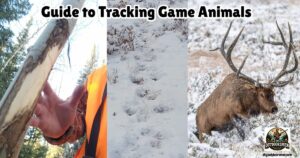
- DIY 4-Step Guide To Field Dressing And Quartering A Deer
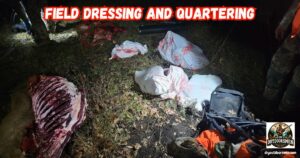
- Night Vision Binoculars For Nocturnal Hunting

- The Science Behind Camouflage Patterns For Deer Hunting

- Binocular Accessories For Hunters

- 9 Tips for Using Trail Cameras To Track Deer Movements

As always, stay safe, enjoy the journey and please try to leave it cleaner than you found it. If you have any comments, questions, ideas, or suggestions please leave them in the comment section below and I’ll get back to you ASAP. You can follow us on YouTube: Man Art Creations for videos of our DIY Adventures.
P.S. – Thanks so much for checking out our blog we really appreciate it. Just so you know, we may receive a commission if you click on some of the links that appear on our site. This helps us keep our content free and up-to-date for everyone. We appreciate your support!
